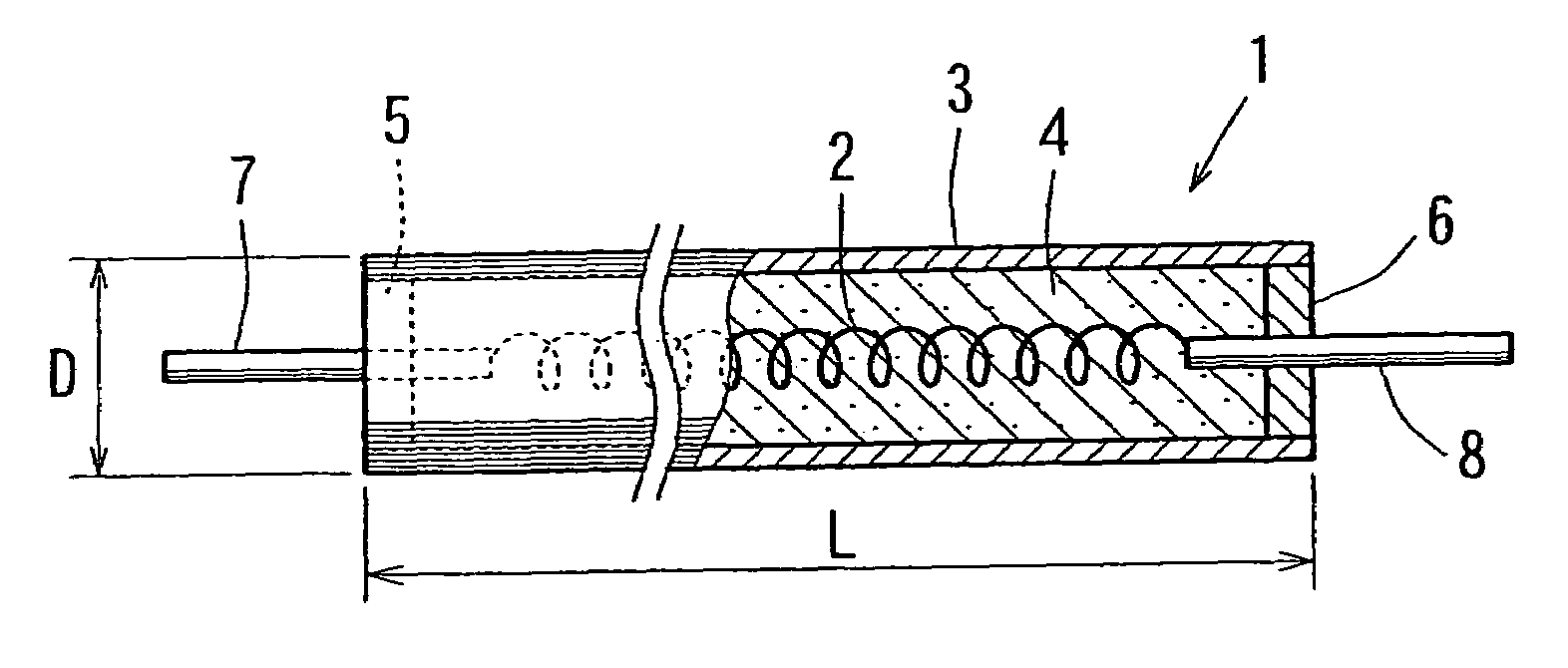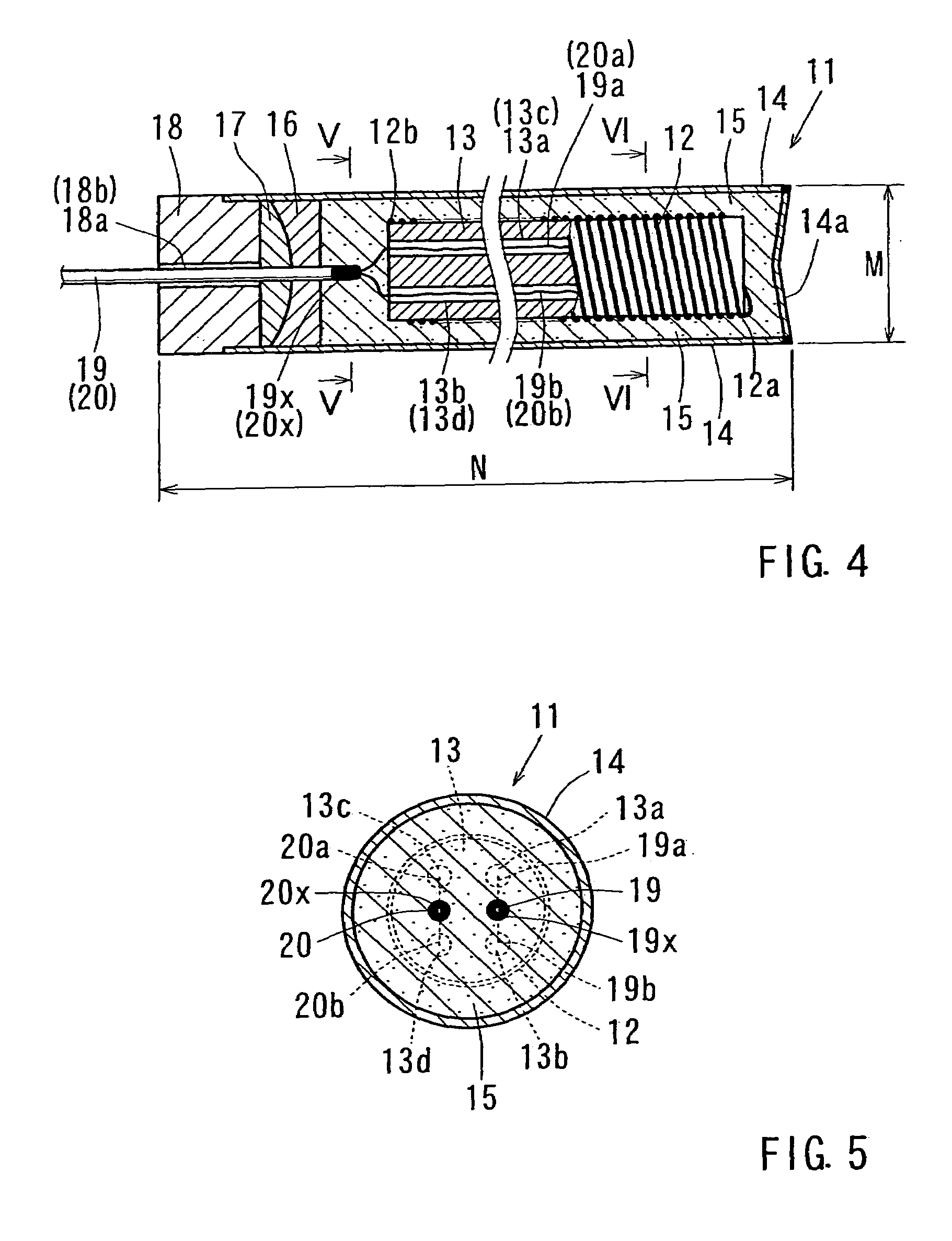Heater
a heater and cartridge technology, applied in the field of heaters, can solve the problems of accelerating the deterioration of the insulation resistance of the electrically insulating material, the breakage of the heating element, and the local temperature is extraordinarily high, so as to achieve the effect of facilitating maintenance of electrical insulation
- Summary
- Abstract
- Description
- Claims
- Application Information
AI Technical Summary
Benefits of technology
Problems solved by technology
Method used
Image
Examples
first embodiment
[0024]FIG. 1 is a partially cut-away front view of a sheathed heater according to the invention, and FIG. 2 shows a left side view of the heater shown in FIG. 1.
[0025]In FIG. 1, a sheathed heater 1 includes a heating element 2 made of metal containing chromium and aluminum in the form of a wire having a spiral-shaped configuration; pipe 3 is made of metal containing nickel and chromium and serves as a sheath for covering the heating element 2; an electrically insulating material 4 for electrical insulating is disposed between the heating element 2 and the pipe 3; a first lead wire 7 is connected to the left end of the heating element 2 as viewed in the figure; a second lead wire 8 is connected to the right end of the heating element 2 as viewed in the figure; a first lead glass 5 seals the left end of the pipe 3 as viewed in the figure; and a second lead glass 6 seals the right end of the pipe 3 as viewed in the figure. The pipe 3 and the first and second lead glass portions 5 and 6...
second embodiment
[0041]FIG. 3 is an enlarged view on the side of lead wires of a cartridge heater according to the present invention; FIG. 4 is a slightly reduced cross-sectional view of the structure taken along line IV—IV in FIG. 3; FIG. 5 is an enlarged cross-sectional view of the structure taken along line V—V in FIG. 4; and FIG. 6 is an enlarged cross-sectional view of the structure taken along line VI—VI in FIG. 4.
[0042]As shown in FIG. 3, in a cartridge heater 11, a first lead wire 19 extends through a through hole 18a of an entrance insulator 18, and a second lead wire 20 extends through a through hole 18b of the entrance insulator 18. The first lead wire 19 and second lead wire 20 are rod-shaped members made of metal and serve as lead wires for a heating element 12 that will be described below.
[0043]As shown in FIG. 4, the cartridge heater 11 is formed by filling a pipe 14 made of metal and serving as a sheath (with a welded bottom plate 14a) with an electrically insulating material 15; a c...
PUM
 Login to View More
Login to View More Abstract
Description
Claims
Application Information
 Login to View More
Login to View More - R&D
- Intellectual Property
- Life Sciences
- Materials
- Tech Scout
- Unparalleled Data Quality
- Higher Quality Content
- 60% Fewer Hallucinations
Browse by: Latest US Patents, China's latest patents, Technical Efficacy Thesaurus, Application Domain, Technology Topic, Popular Technical Reports.
© 2025 PatSnap. All rights reserved.Legal|Privacy policy|Modern Slavery Act Transparency Statement|Sitemap|About US| Contact US: help@patsnap.com



